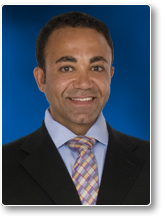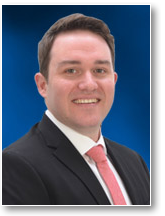Chiropractic Myths
West Wendover Avenue in Greenboro, North Carolina
Over the years a number of myths pertaining to chiropractic have been created, mostly by economic competitors and those with differing philosophies. While the majority of myths have no basis, they do exist and cause some confusion to individuals unfamiliar with chiropractic care.
Myth: Spinal Adjustments Hurt
Answer: Quite the contrary. Many patients feel instant relief immediately after their treatments. In fact, most look forward to their chiropractic treatments. In patients suffering from severe bouts of back or neck pain, some discomfort may be experienced for obvious reasons, however, for most patients this is not the case.
Myth: Spinal Adjustments Are Dangerous
Answer: Chiropractic spinal adjustments are extremely safe when performed by chiropractors. In fact, chiropractic adjustments are among the safest treatments for most back and neck problems. According to a 1993 Ontario Ministry of Health commissioned study,
"There is no clinical or case-control study that demonstrates or even implies that chiropractic spinal manipulation is unsafe in the treatment of low-back pain. Some medical treatments are equally safe, but others are unsafe and generate iatrogenic (doctor-induced) complications for low-back pain patients. Our reading of the literature suggests that chiropractic manipulation is safer than medical management of low-back pain."
Lead investigator of the study, Pran Manga, Ph.D., however, did warn that spinal adjustments performed by health care professionals other than qualified doctors of chiropractic were potentially harmful and less effective: " Indeed, several existing medical therapies of low-back pain are generally contraindicated on the basis of the existing clinical trials. There is also some evidence in the literature to suggest that spinal manipulations are less safe and less effective when performed by nonchiropractic professionals."
On December 8, 1994, the Agency for Health Care Policy and Research (AHCPR) of the US Department of Health and Human Services released clinical practice guidelines for the management of acute low back pain. Their guidelines were developed after extensive study of the diagnostic and treatment methods used for acute low back pain. Their findings included:
- The risk of serious complications from lumbar spinal manipulation is rare;
- Conservative treatment such as spinal manipulation should be pursued in most cases before considering surgical intervention.
- Prescription drugs such as oral steroids, antidepressant medications and colchicine are not recommended for acute low back problems.
Myth: Chiropractic Doctors Lack Education Compared With Medical Doctors
Answer: The training and education endured by chiropractors is extremely thorough and demanding, similar to that of medical doctors with the exception of pharmacology and surgery.
Prior to entering chiropractic college, the aspiring chiropractor requires 2-4 years (depending on the college attended and the state one wishes to practice in) of premed undergraduate studies. Once completed, the student must next complete 4-5 academic years of studies at a chiropractic college. This includes extensive training in anatomy, physiology, pathology, neurology, radiology, differential diagnosis, chiropractic adjustive techniques, biomechanics, and other health-related studies.
In addition, prior to graduation each student must successfully complete several hundred clinical hours of "real" patient management in a clinical setting under professional supervision. Most chiropractic colleges also require students to partake in clinical externship programs which place them in actual chiropractic offices, further enhancing their clinical practice skills. Near or soon after graduation, the new doctors of chiropractic must successfully complete rigorous National and State Board examinations prior to obtaining a license to practice chiropractic. Once licensed, most states require that chiropractors receive annual continuing education to ensure that a high level of competency is maintained.
Myth: Chiropractic Is Not Scientific
Answer: Chiropractors have always sought to provide the safest and most effective healing methods for their patients. In order to achieve this, the chiropractic profession has been dedicated to conducting scientific studies to improve their diagnostic methods and treatment techniques. In the last 20 years chiropractic health care has established an impressive array of scientific research that demonstrates the efficacy, safety and cost effectiveness of chiropractic care. There are many further studies currently underway, and several have been performed by medical doctors and government researchers in both the U.S. and a number of other countries.
In fact, the chiropractic profession has accumulated a greater number of scientific trials on chiropractic than the medical profession has accumulated for many of the treatments rendered by medical doctors. According to David M. Edy, M.D., Ph.D., professor of health policy and management with Duke University, North Carolina, only 15 percent of all medical interventions are supported by solid scientific evidence. Paul G. Shekelle, M.D., M.P.H., of the RAND Corporation made the following statement on ABC's 20/20:
" There are considerably more randomized controlled trials which show benefit of this (chiropractic care) than there are for many, many other things which physicians and neurosurgeons do all the time.





